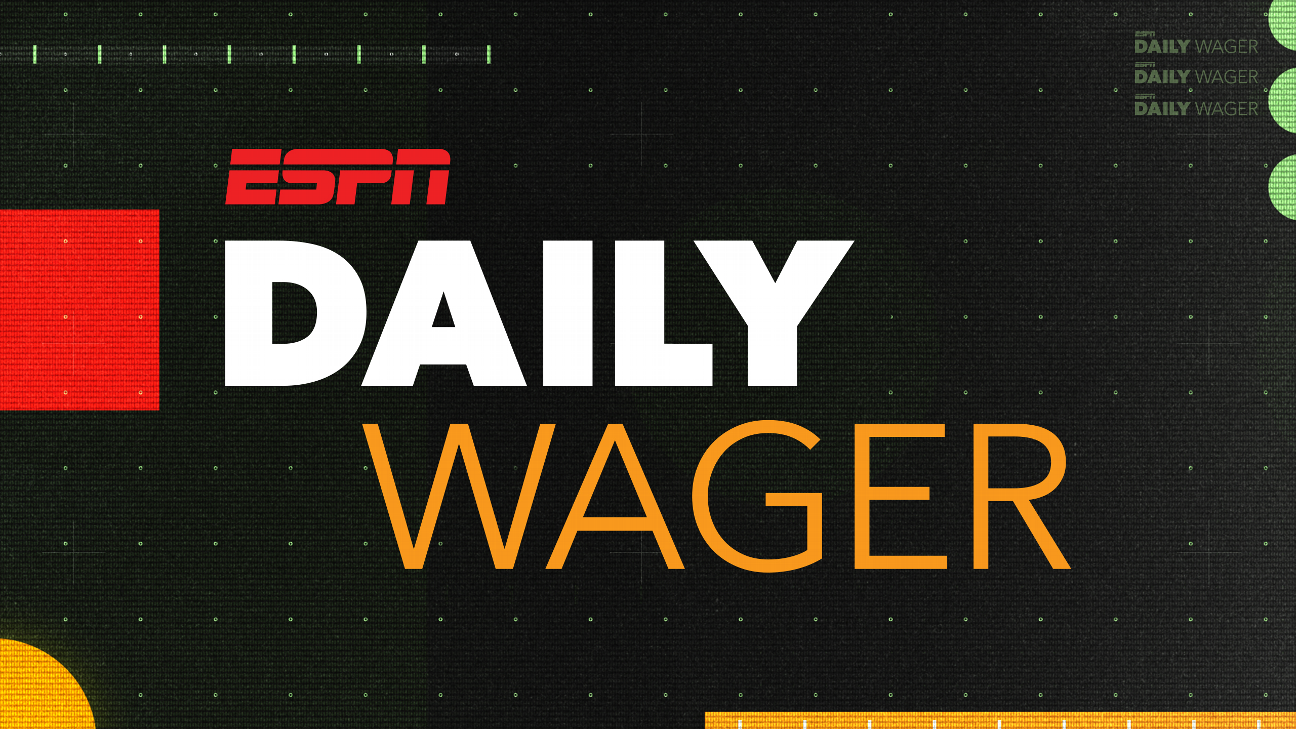Ad Blocker Detected
Our website is made possible by displaying online advertisements to our visitors. Please consider supporting us by disabling your ad blocker.
The NHL is adopting in-game faceoff win probabilities for broadcasts, a significant leap for the league in data analysis and technology.
“Face-off Probability” leverages data collected by NHL Edge, the league’s puck and player tracking technology, to create a graphic that displays the chances that a player wins a faceoff or a team gains possession of the puck.
It’s one of the first machine-learning stats the league has developed in partnership with Amazon Web Services, whose artificial intelligence can create in-game probabilities in subsecond speed.
“It’s the first time that the NHL and AWS have come together to build something that will precede an event and offer a probability for whether or not that event will occur,” Dave Lehanski, NHL executive vice president for business development and innovation, told ESPN on Monday. “Typically, we’re taking data from an event and quickly analyzing it to present some type of insight. Even if we’re doing that in real time, we’ve yet to do it in advance of an event.”
1 Related
Priya Ponnapalli, senior manager at Amazon Machine Learning Solutions Lab, said Face-off Probability uses more than 70 different data points, from historic and in-game stats, as well as contextual data. Ponnapalli said the artificial intelligence takes 10 years of faceoff results — more than 200,000 draws for all the players in the league today — and uses data that includes a player’s success rate based on faceoff location, home games vs. away games and history against specific opponents. It also factors in personal data such as handedness, height and weight.
The NHL then adds in-game faceoff stats to round out the data. In both the historical and in-game stats, there’s additional context such as game situations, score and time at which the faceoffs occurred.
The artificial intelligence uses the NHL player tracking system to determine who could take the faceoff from both teams and then immediately runs that data to produce a probability, which is shared with broadcasters and fans.
Ponnapalli said there were challenges in creating this technology for hockey as compared to other sports with which AWS has worked.
“The faceoff prediction model has to be flexible to generate predictions as the game situation changes,” she said. “For example, if a player is waved out of the faceoff due to violation, the predictions have to be updated to new matchup based on real-time streaming sensor data. The predictions also occur at subsecond latencies and are triggered anytime. All of this complexity had to be built in, and the resulting solution needed to have flexibility.”
The NHL believes its tracking technology provides a way to further educate fans about the game and to provide broadcasters with more opportunities for storytelling. Lehanski said that with 50 to 70 faceoffs per game, and up to 20 seconds between a stoppage in play and the faceoff, there should be plenty of those storytelling opportunities.
“If there’s a key critical faceoff, we want to be able to be able to show a probability for who might win and how that probability might change if someone else took the faceoffs. That would be incredibly compelling and really valuable to the viewer,” he said.
With this machine-learning stat now in place, Lehanski said that the underlying technology could be applied to other aspects of hockey to create probabilities and predictions for broadcasts.

A daily sports betting news and information show (6-7 p.m. ET, ESPN2) that aims to better serve the millions of sports fans who participate in sports wagering and help educate general sports fans with in-depth analysis. Watch »
“Take the historical data, combine it with real, live, in-game data, processing it to develop an analytic or a probability, and then feature that on screen as a graphic in less than a second,” he said. “It definitely opens the door for an unlimited opportunity for us to expand the way we look at all of the events that occur within the context of a hockey game.”
These probabilities, and all the data collected by the NHL Edge technology, have another intriguing application: sports wagering.
The NHL anticipates that sportsbooks eventually will create additional prop wagering around data collected from player tracking. The league has formal data licensing deals with MGM Resorts International, FanDuel, William Hill and PointsBet. It also has a 10-year deal with Sportradar as the NHL’s official betting data rights and official integrity partner.
Lehanski said that “the technology is there to bet on faceoffs,” but he cautioned that kind of wagering is only a possibility at this point.
“If there’s a betting entity out there that wants to attribute a new bet type to faceoffs and can we’re capturing to developing an odd for the play, based on the probability of outcome, then, in theory, there’s a long enough window through a mobile application, you could hit a button and decide whether or not you want to bet on the outcome of a faceoff,” he said.
Lehanski said the challenges for real-time wagering like faceoffs are the time differences between bets made inside an arena or by fans at home watching a broadcast with a several-seconds delay, as well as whether the NHL ever would allow wagering on outcomes like faceoffs.
